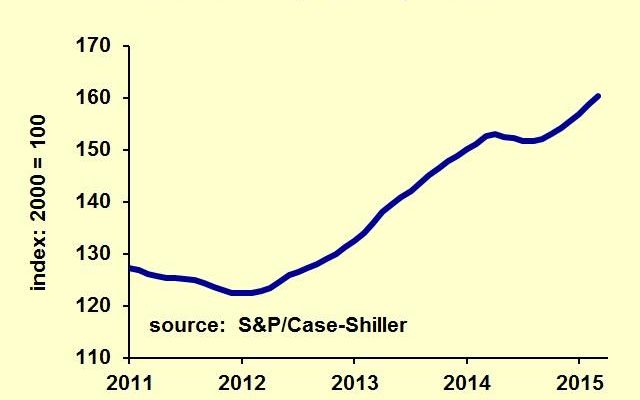Home prices are rising, and I’m being asked “Is this another housing bubble?” Even though the market has tightened, it’s not a bubble—at least not yet.
Bubbles are best recognized after they have burst. In fact, Investopedia explicitly says that a bubble is an expansion followed by a contraction. The trick is in figuring out if trade at higher valuations is going to be followed by a contraction.
I will address this issue nationally, but certainly particular local markets may be bubbles. That’s bad for buyers who watch their assets drop in value, but it doesn’t have national consequences. Our last housing bubble, however, did go coast to coast with dramatic recessionary impacts when it burst. If the United States is entering a general housing bubble, that would be dangerous. Fortunately, that is not the case.

Home prices are certainly rising across the country. The median price of new single family homes rose 8.3 percent over the past 12 months. The federal Home Price Index, a better measure of existing home prices, rose 5.5 percent. The Case-Shiller index for 20 major markets is up 5.0 percent. Whatever gauge you like, home prices are rising.
Anecdotes about tight markets are common in many areas. I have heard of homes selling quickly for the asking price, or homes with multiple offers above the asking price. A Google news search shows articles about tight housing markets in Asheville, Boston, Chicago and even Detroit. (I stopped at the letter D, but you get the picture.) Some cities are not doing so well, of course.
Prices should be strong right now. Employment is up about two percent in the past year, with wage rates up a similar amount. There are an increasing number of job openings, giving confidence to people about their future. With higher take-home pay, some renters are moving into houses. Helping the trend is rents that are rising faster than overall inflation. Mortgage rates are still low, with rumors of higher rates in the future.

